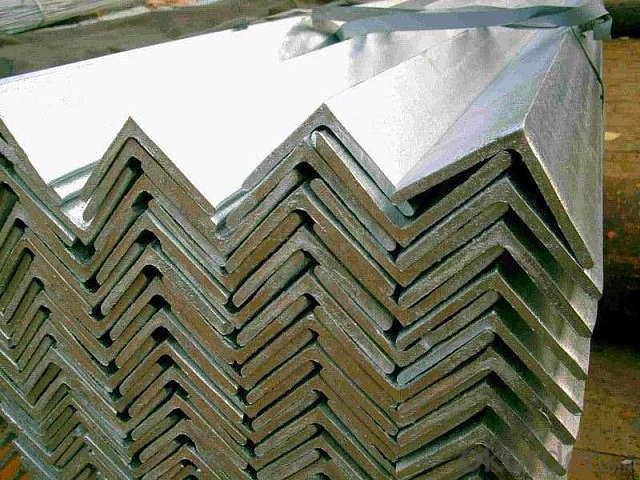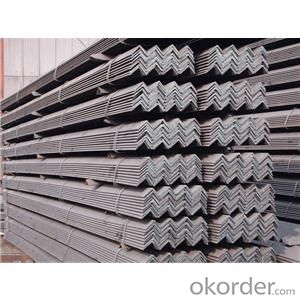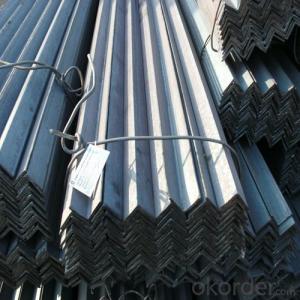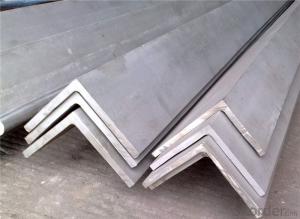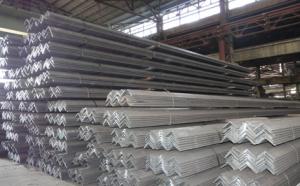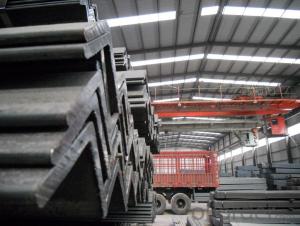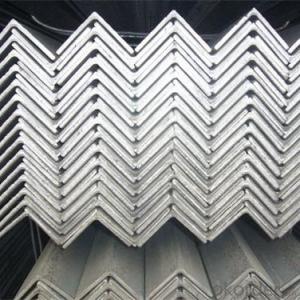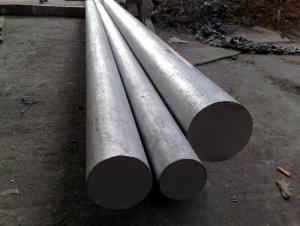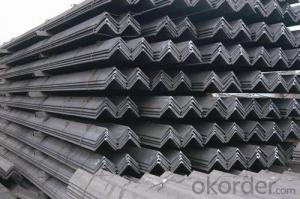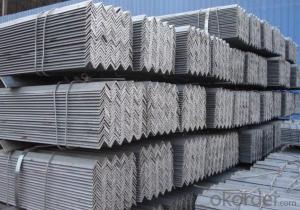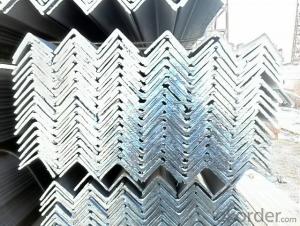Hot Rolled Small Angle Rolling
- Loading Port:
- Tianjin
- Payment Terms:
- TT or LC
- Min Order Qty:
- 25 m.t.
- Supply Capability:
- 2000 m.t./month
OKorder Service Pledge
OKorder Financial Service
You Might Also Like
Product Description:
OKorder is offering Hot Rolled Small Angle Rolling at great prices with worldwide shipping. Our supplier is a world-class manufacturer of steel, with our products utilized the world over. OKorder annually supplies products to European, North American and Asian markets. We provide quotations within 24 hours of receiving an inquiry and guarantee competitive prices.
Product Applications:
Hot Rolled Small Angle Rolling are ideal for structural applications and are widely used in the construction of buildings and bridges, and the manufacturing, petrochemical, and transportation industries.
Product Advantages:
OKorder's Hot Rolled Small Angle Rolling are durable, strong, and resist corrosion.
Main Product Features:
· Premium quality
· Prompt delivery & seaworthy packing (30 days after receiving deposit)
· Corrosion resistance
· Can be recycled and reused
· Mill test certification
· Professional Service
· Competitive pricing
Product Specifications:
Manufacture: Hot rolled
Grade: Q195 – 235
Certificates: ISO, SGS, BV, CIQ
Length: 6m – 12m, as per customer request
Packaging: Export packing, nude packing, bundled
Chinese Standard (H*W*T) | Weight (Kg/m) | 6m (pcs/ton) | Light I (H*W*T) | Weight (Kg/m) | 6m (pcs/ton) | Light II (H*W*T) | Weight (Kg/m) | 6M |
100*68*4.5 | 11.261 | 14.8 | 100*66*4.3 | 10.13 | 16.4 | 100*64*4 | 8.45 | 19.7 |
120*74*5.0 | 13.987 | 11.9 | 120*72*4.8 | 12.59 | 13.2 | 120*70*4.5 | 10.49 | 15.8 |
140*80*5.5 | 16.89 | 9.8 | 140*78*5.3 | 15.2 | 10.9 | 140*76*5 | 12.67 | 13.1 |
160*88*6 | 20.513 | 8.1 | 160*86*5.8 | 18.46 | 9 | 160*84*5.5 | 15.38 | 10.8 |
180*94*6.5 | 24.143 | 6.9 | 180*92*6.3 | 21.73 | 7.6 | 180*90*6 | 18.11 | 9.2 |
200*100*7 | 27.929 | 5.9 | 200*98*6.8 | 25.14 | 6.6 | 200*96*6.5 | 20.95 | 7.9 |
220*110*7.5 | 33.07 | 5 | 220*108*7.3 | 29.76 | 5.6 | 220*106*7 | 24.8 | 6.7 |
250*116*8 | 38.105 | 4.3 | 250*114*7.8 | 34.29 | 4.8 | 250*112*7.5 | 28.58 | 5.8 |
280*122*8.5 | 43.492 | 3.8 | 280*120*8.2 | 39.14 | 4.2 | 280*120*8 | 36.97 | 4.5 |
300*126*9 | 48.084 | 3.4 | 300*124*9.2 | 43.28 | 3.8 | 300*124*8.5 | 40.87 | 4 |
320*130*9.5 | 52.717 | 3.1 | 320*127*9.2 | 48.5 | 3.4 | |||
360*136*10 | 60.037 | 2.7 | 360*132*9.5 | 55.23 | 3 |
FAQ:
Q1: Why buy Materials & Equipment from OKorder.com?
A1: All products offered byOKorder.com are carefully selected from China's most reliable manufacturing enterprises. Through its ISO certifications, OKorder.com adheres to the highest standards and a commitment to supply chain safety and customer satisfaction.
Q2: How do we guarantee the quality of our products?
A2: We have established an advanced quality management system which conducts strict quality tests at every step, from raw materials to the final product. At the same time, we provide extensive follow-up service assurances as required.
Q3: How soon can we receive the product after purchase?
A3: Within three days of placing an order, we will begin production. The specific shipping date is dependent upon international and government factors, but is typically 7 to 10 workdays.
Q4: What makes stainless steel stainless?
A4: Stainless steel must contain at least 10.5 % chromium. It is this element that reacts with the oxygen in the air to form a complex chrome-oxide surface layer that is invisible but strong enough to prevent further oxygen from "staining" (rusting) the surface. Higher levels of chromium and the addition of other alloying elements such as nickel and molybdenum enhance this surface layer and improve the corrosion resistance of the stainless material.
Q5: Can stainless steel rust?
A5: Stainless does not "rust" as you think of regular steel rusting with a red oxide on the surface that flakes off. If you see red rust it is probably due to some iron particles that have contaminated the surface of the stainless steel and it is these iron particles that are rusting. Look at the source of the rusting and see if you can remove it from the surface.
Images:
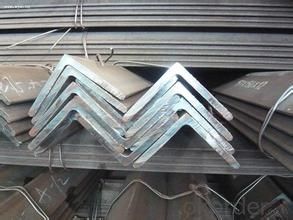
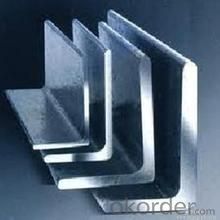
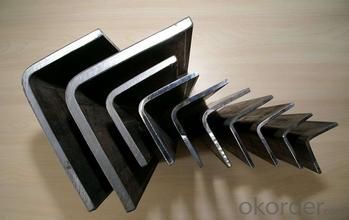
- Q: How do steel angles contribute to the overall stability of a building?
- Steel angles contribute to the overall stability of a building by providing structural support and reinforcement. They are commonly used to reinforce corners and joints in construction, helping to distribute the load and prevent the building from collapsing or experiencing excessive movement during strong winds, earthquakes, or other external forces. The angled shape of steel angles also helps to increase the rigidity and strength of the building's framework, enhancing its overall stability and durability.
- Q: How do steel angles contribute to the overall safety of a building?
- Steel angles contribute to the overall safety of a building by providing structural support and reinforcement. They are commonly used in construction to connect and strengthen various structural components, such as beams, columns, and trusses. Steel angles help distribute loads and resist forces, such as wind, earthquakes, and heavy loads, thereby enhancing the building's stability and resistance to collapse. Additionally, they can prevent lateral movement and deformation, ensuring the structural integrity of the building.
- Q: Can steel angles be used as decorative elements?
- Yes, steel angles can be used as decorative elements in various applications such as architectural designs, furniture, and interior decorations. Their sleek and modern appearance, along with their versatility and strength, make them a popular choice for adding a visually appealing touch to spaces.
- Q: How do you protect steel angles from weathering?
- To protect steel angles from weathering, there are several effective methods that can be employed. The most common approach is to apply a protective coating or paint specifically designed for steel surfaces. This coating acts as a barrier, preventing moisture and oxygen from coming into direct contact with the steel and thus reducing the chances of rust formation. It is essential to choose a coating that is weather-resistant and provides long-term durability. Before applying the protective coating, it is crucial to thoroughly clean the steel angles to remove any dirt, grease, or existing rust. This can be done through abrasive cleaning methods such as sandblasting or using a wire brush. After cleaning, the surface should be primed with a corrosion-resistant primer, which enhances the adhesion of the protective coating. Regular maintenance is also essential to ensure the ongoing protection of steel angles from weathering. This includes inspecting the coating periodically for any signs of damage or wear and promptly addressing any issues that arise. Touching up areas where the coating has been compromised is necessary to maintain the integrity of the protective layer. Moreover, proper design and installation techniques can also contribute to protecting steel angles from weathering. Ensuring that the angles are adequately sealed and protected from direct exposure to rain, snow, or other moisture sources is vital. This can be achieved through proper drainage systems, such as gutters or downspouts, to redirect water away from the steel angles. Lastly, considering alternative materials or coatings that are inherently resistant to weathering, such as stainless steel or galvanized steel, can provide an added layer of protection against environmental elements. These materials have a higher resistance to corrosion and are more suitable for outdoor applications where weathering is a concern. By implementing a combination of protective coatings, regular maintenance, proper design, and utilizing weather-resistant materials, steel angles can be effectively protected from weathering and maintain their structural integrity over an extended period.
- Q: How do you determine the appropriate size of steel angle for a specific application?
- To determine the appropriate size of steel angle for a specific application, factors such as the load it needs to bear, the length of the span, the type of material being supported, and any applicable building codes or regulations should be considered. Structural engineers or professionals with expertise in steel construction can perform calculations and analysis to determine the required size of steel angle based on these factors.
- Q: How do steel angles provide structural support?
- Steel angles provide structural support by distributing the weight and load of a structure evenly and efficiently. They are L-shaped beams made of steel that are commonly used in construction projects. The two legs of the angle provide stability and strength, allowing it to resist bending and twisting forces. Steel angles are often used in combination with other structural components, such as beams, columns, and trusses, to create a stable framework. They can be bolted, welded, or otherwise connected to these components, providing additional support and reinforcement. The versatility of steel angles allows them to be used in a wide range of applications, from building frames and supports to bracing and reinforcing structures. By adding steel angles to a structure, it helps to distribute the weight and load more evenly across the different components, reducing the risk of structural failure. They can help to resist compressive, tensile, and bending forces, providing stability and preventing deformation under heavy loads or external forces such as wind or earthquakes. Moreover, steel angles can also be used to create connections and joints between different parts of a structure, ensuring that they are securely fastened together. This enhances the overall stability and integrity of the structure, making it more resistant to movement, vibrations, and other external factors that could compromise its safety. In summary, steel angles provide structural support by distributing weight, resisting bending and twisting forces, enhancing stability, and reinforcing connections between different structural components. Their strength, versatility, and reliability make them a popular choice in construction projects where structural integrity and stability are crucial.
- Q: What is the maximum load capacity for a curved steel angle?
- The maximum load capacity for a curved steel angle would depend on various factors such as the dimensions of the angle, the type of steel used, and the specific application. It is best to consult engineering specifications or consult a structural engineer for an accurate determination of the maximum load capacity.
- Q: Can steel angles be used in agricultural or farm applications?
- Yes, steel angles can be used in agricultural or farm applications. They are commonly used to fabricate support structures for buildings, fencing, gates, equipment racks, and storage solutions in agricultural settings. Steel angles are durable, versatile, and provide excellent strength, making them suitable for various farm applications.
- Q: Can steel angles be used for bracing?
- Certainly! Bracing can be achieved using steel angles. These angles are widely employed in construction and engineering ventures to furnish structural support and reinforcement. Their versatility allows for effortless welding or bolting, rendering them adaptable to diverse applications, including bracing. Owing to their inherent strength and rigidity, steel angles excel at bestowing stability and withstanding lateral forces. They are frequently utilized to brace columns, beams, and other structural components, thereby augmenting the overall robustness and stability of the edifice.
- Q: What is the typical thickness tolerance for steel angles?
- The typical thickness tolerance for steel angles is typically around ±1/16 inch or ±1.59 mm.
Send your message to us
Hot Rolled Small Angle Rolling
- Loading Port:
- Tianjin
- Payment Terms:
- TT or LC
- Min Order Qty:
- 25 m.t.
- Supply Capability:
- 2000 m.t./month
OKorder Service Pledge
OKorder Financial Service
Similar products
Hot products
Hot Searches
Related keywords




